[Newsbits] 21-23.02.2024: BharatGPT, Raisina Dialogue & More

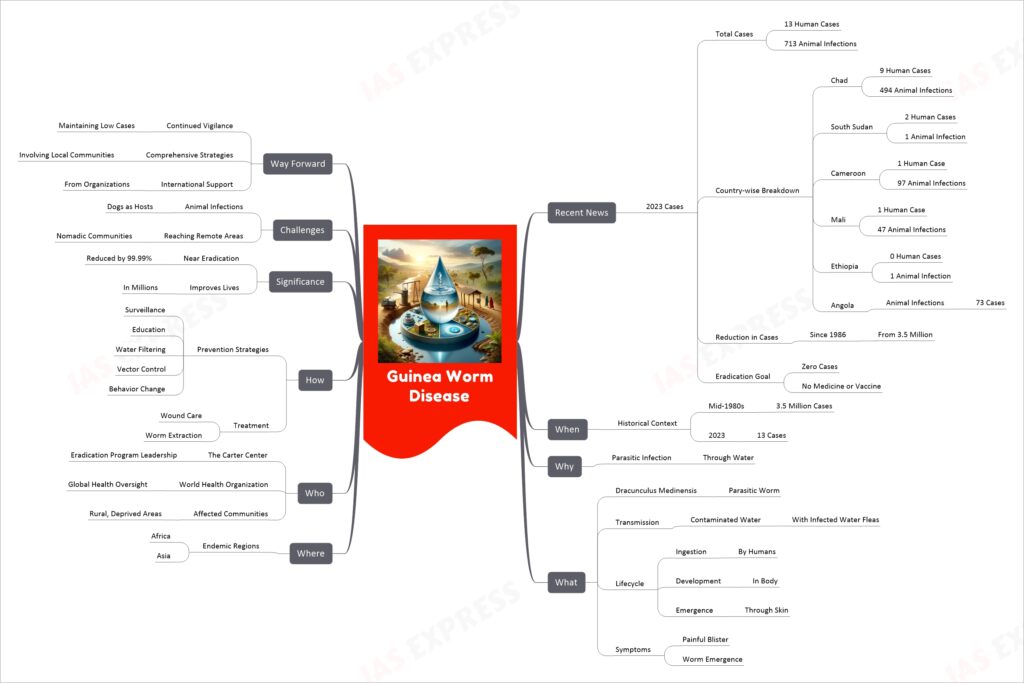
Guinea worm disease, caused by the parasitic worm Dracunculus medinensis, is a crippling ailment transmitted through drinking water contaminated with infected water fleas. Once prevalent with 3.5 million cases in the mid-1980s across Africa and Asia, the disease has seen a dramatic reduction, with only 13 human cases reported worldwide in 2023. The Carter Center, leading the eradication efforts since 1986, has brought the disease to the brink of eradication without the use of medicine or vaccines, relying instead on community-based interventions like surveillance, education, water filtering, and vector control. Although the disease is rarely fatal, it leads to severe disability and affects the most deprived and isolated communities. The final push towards complete eradication faces challenges such as animal infections, especially in dogs, and reaching remote or nomadic communities.
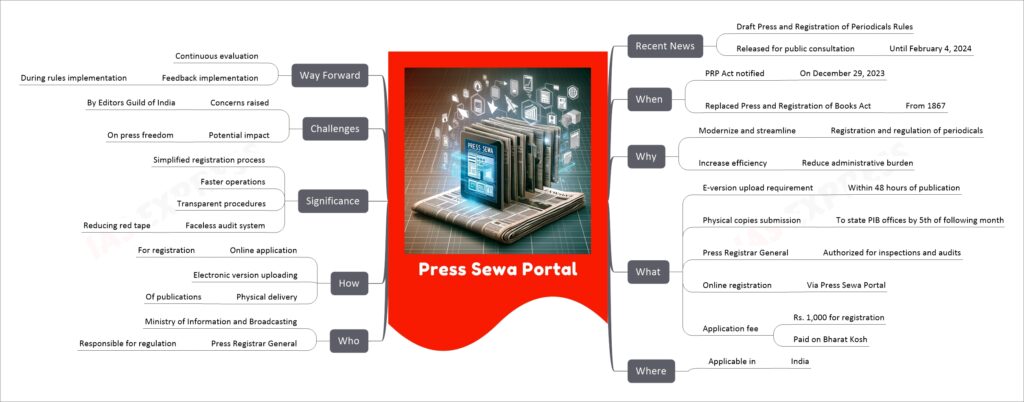
The Press Sewa Portal, introduced under the Press and Registration of Periodicals Act, 2023 by the Indian Ministry of Information and Broadcasting, is a digital platform designed to streamline the registration and regulation of periodicals in India. It mandates publishers to upload e-versions of their publications within 48 hours and submit physical copies monthly to the Press Information Bureau. Aimed at modernizing the process and making it more efficient, the portal also allows for faceless audits and inspections by the Press Registrar General. While it promises operational efficiency and transparency, concerns have been raised about its potential impact on press freedom.
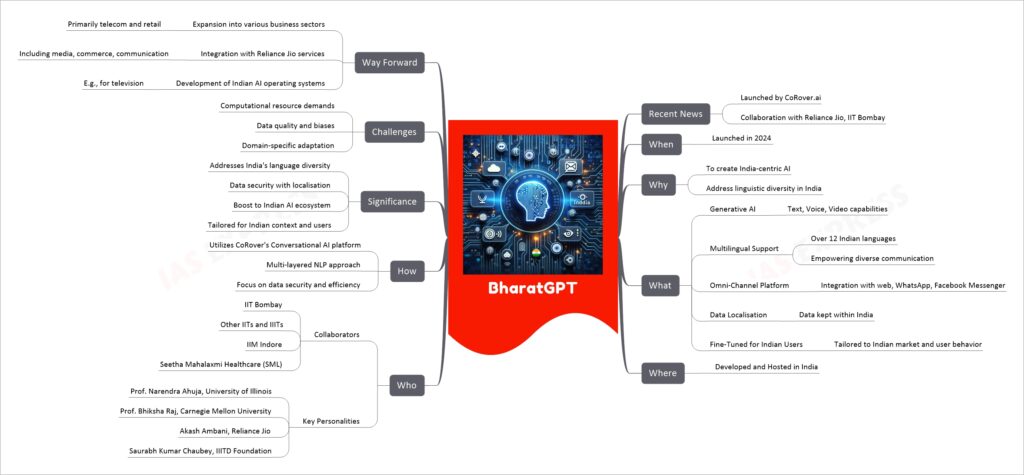
BharatGPT, developed by CoRover.ai in collaboration with Reliance Jio and several Indian institutes of technology like IIT Bombay, represents a significant step in India’s journey towards creating a tailored AI ecosystem. This generative AI platform is unique in its multilingual capabilities, supporting over 12 Indian languages, and is fine-tuned specifically for the Indian user base. It stands out for its data localization commitment, ensuring that all data remains within India’s borders, thereby aligning with the country’s data security and privacy norms. BharatGPT is versatile in its application, supporting text, voice, and video, and is designed to cater to diverse sectors, with a particular focus on telecom and retail, fields where Reliance is a key player.
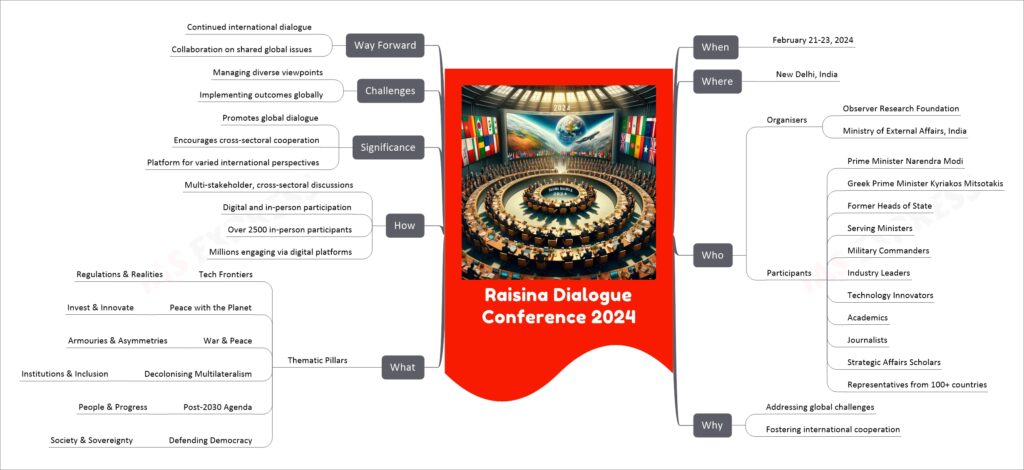
The Raisina Dialogue Conference 2024, held from February 21-23 in New Delhi, is a prominent international forum on geopolitics and geo-economics. Organized by the Observer Research Foundation and India’s Ministry of External Affairs, it brings together global leaders, including India’s Prime Minister Narendra Modi and Greek Prime Minister Kyriakos Mitsotakis. The conference focuses on pressing global issues through six thematic pillars: technological advancements, environmental sustainability, contemporary warfare, redefining multilateralism, future development agendas, and the resilience of democracy. It facilitates multi-stakeholder discussions with over 2500 participants and millions engaging digitally, highlighting its importance as a platform for international cooperation and dialogue on critical world matters.
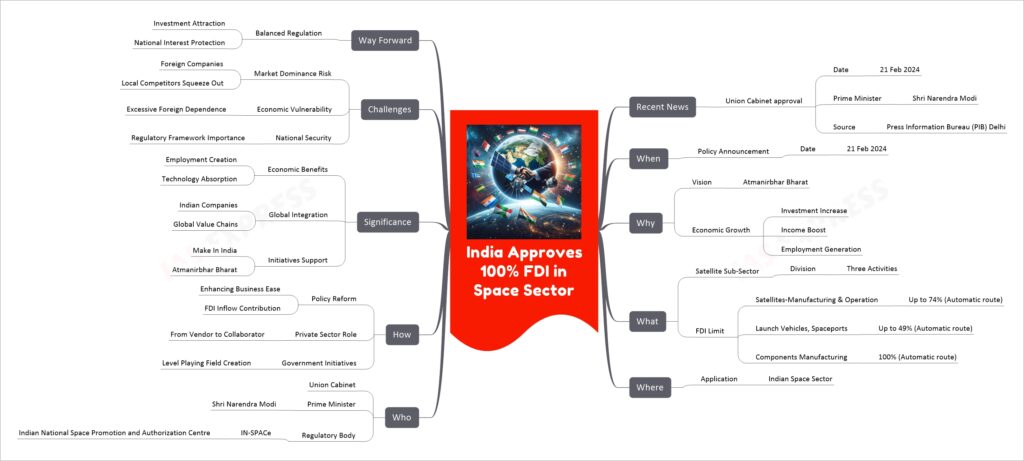
The Indian government’s recent policy to approve 100% Foreign Direct Investment (FDI) in the space sector marks a significant shift towards liberalizing the sector. Announced on February 21, 2024, the policy aims to bolster the Atmanirbhar Bharat vision by increasing investment, income, and employment. It categorizes investment opportunities in the space sector into three segments, allowing different levels of FDI under automatic and government routes. The policy, overseen by the Indian National Space Promotion and Authorization Centre (IN-SPACe), aims to transform the role of private players from mere vendors to collaborators in space activities. While the move promises economic benefits and global integration, it also raises concerns about potential market dominance by foreign companies and the need for balanced regulations to protect national interests.
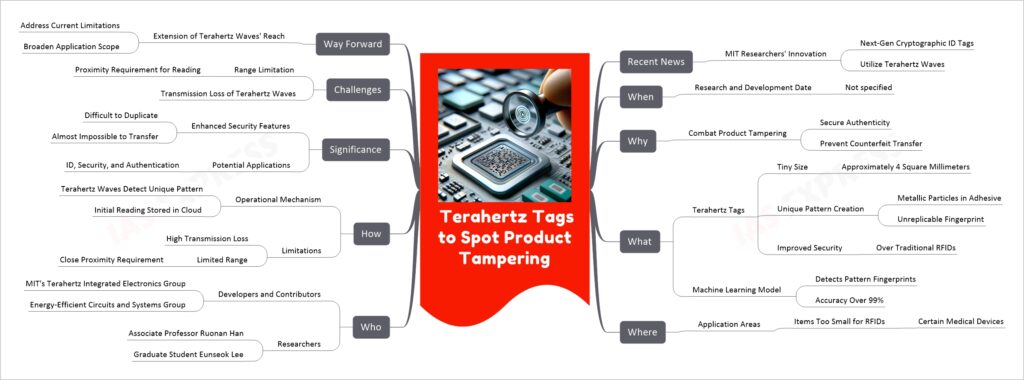
Terahertz tags, developed by MIT researchers, represent a groundbreaking advancement in combating product tampering and counterfeit transfer. These tiny tags, only about 4 square millimeters in size, create a unique, unreplicable pattern using metallic particles in their adhesive, acting like a fingerprint for authentication. They offer enhanced security compared to traditional RFIDs and are especially useful for small items like certain medical devices. The tags are read using terahertz waves, and their authenticity is verified with a machine-learning model boasting over 99% accuracy. However, they do have limitations, such as a short range of effectiveness and high transmission loss. The researchers are working on extending the reach of terahertz waves to overcome these challenges and widen their application in security and authentication.
If you like this post, please share your feedback in the comments section below so that we will upload more posts like this.
